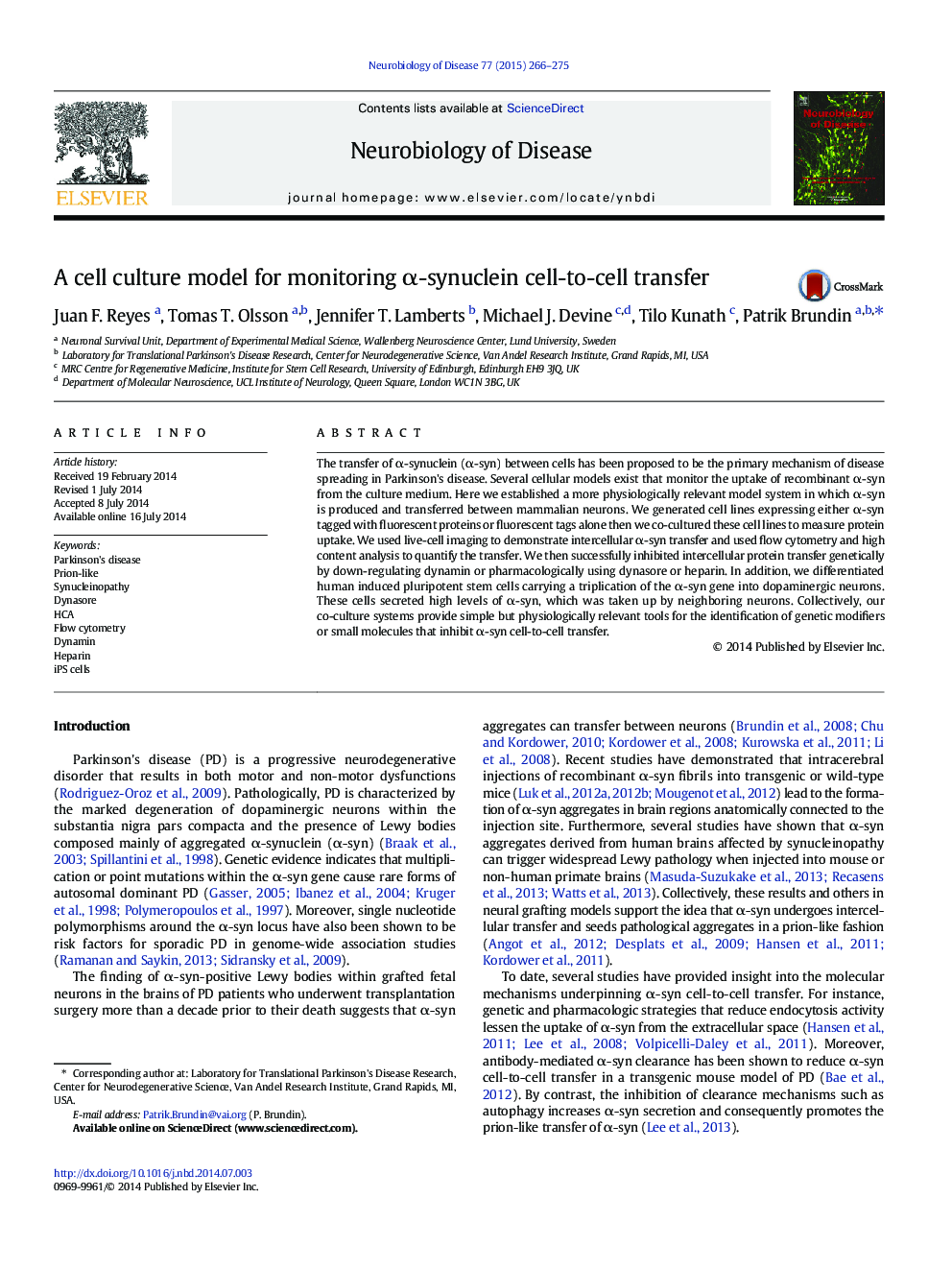| Article ID | Journal | Published Year | Pages | File Type |
|---|---|---|---|---|
| 3069360 | Neurobiology of Disease | 2015 | 10 Pages |
•Generation of a co-culture model that allows the selective quantification of a-synuclein cell-to-cell transfer.•Protein cell-to-cell transfer is not specific to a-synuclein.•Genetic and pharmacological down regulation of dynamin prevents a-synuclein cell-to-cell transfer.•Dopaminergic neurons derived from human iPSCs secrete α-syn that is taken up by neighboring neurons.
The transfer of α-synuclein (α-syn) between cells has been proposed to be the primary mechanism of disease spreading in Parkinson's disease. Several cellular models exist that monitor the uptake of recombinant α-syn from the culture medium. Here we established a more physiologically relevant model system in which α-syn is produced and transferred between mammalian neurons. We generated cell lines expressing either α-syn tagged with fluorescent proteins or fluorescent tags alone then we co-cultured these cell lines to measure protein uptake. We used live-cell imaging to demonstrate intercellular α-syn transfer and used flow cytometry and high content analysis to quantify the transfer. We then successfully inhibited intercellular protein transfer genetically by down-regulating dynamin or pharmacologically using dynasore or heparin. In addition, we differentiated human induced pluripotent stem cells carrying a triplication of the α-syn gene into dopaminergic neurons. These cells secreted high levels of α-syn, which was taken up by neighboring neurons. Collectively, our co-culture systems provide simple but physiologically relevant tools for the identification of genetic modifiers or small molecules that inhibit α-syn cell-to-cell transfer.
